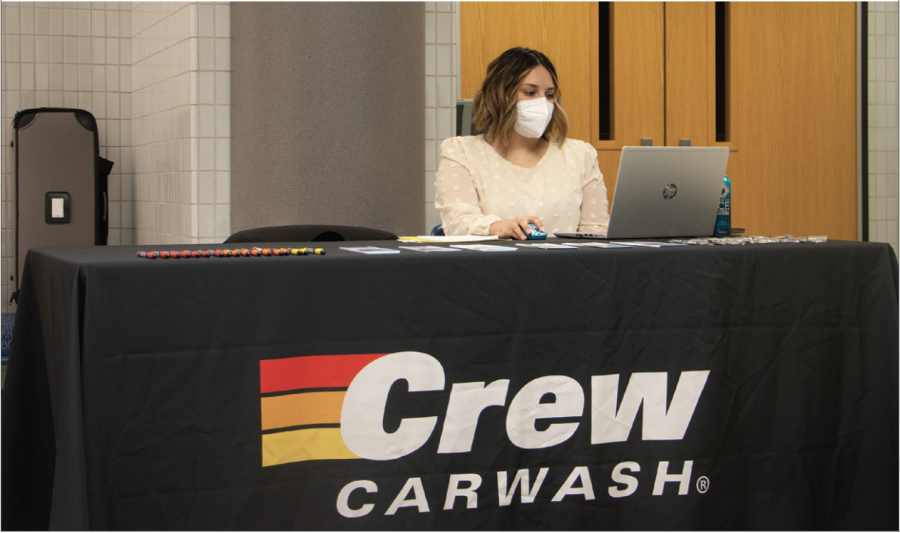I was born in Canada. When my mom delivered me, the most my parents paid was the $15 (Canadian) for parking. Here in the United States, an uninsured pregnancy can cost anywhere from $30,000 to $50,000 USD. The difference comes from the two countries’ healthcare systems; Canada has a universal—mostly government-funded—Medicare system, while the United States uses a public-private system, a system that does not offer universal coverage. In 2018, an estimated 92% of the U.S. population had medical coverage, leaving around 27.5 million Americans uninsured.
Amid the COVD-19 pandemic, the United States has fared the worst worldwide. At the time of writing this column, the United States has reported 7 million cases—the most in the world. That number, for example, is 1 million more than India, a country with a much higher population as well as population density. Additionally, the United States has a comparatively high case-to-fatality ratio and is in the Top 10 countries for deaths per 100,000 population. By way of contrast, Taiwan, with an entirely government-run universal healthcare, was not hit by the coronavirus nearly as hard as the United States. Despite having densely populated cities and being very close to mainland China, Taiwan has reported just 514 cases and seven deaths.
With these numbers in mind, as someone who immigrated from Canada and knew its medical system, my gut reaction was to think the United States must be faring poorly because of its lack of universal healthcare. But further investigation shows that’s not really the case.
In fact, ironically, the Global Health Security Index rated the U.S. healthcare system the highest in the world for its pandemic preparedness in 2019. The United States scored the highest in two of three categories and the second highest in the third. Despite leaving 8% of the population uninsured, our healthcare system seemed to be in a good place. So why is it that the United States was hit by coronavirus so badly?
As it turns out, the problem lay in the federal government’s coronavirus response, not the U.S. healthcare system itself. The government’s attempt to contain the virus was late in every one of the four phases it had established. In what was finally a step in the right direction, the fourth phase finally initiated development of mass testing, availability of medical supplies and encouragement of Americans to wear masks, wash their hands, etc. However, in late July to early August, the Trump administration forced a reopening to restart the economy. Unsurprisingly, cases spiked. And that brings us to where we are today.
Many people may place the blame of high cases and fatalities on poor healthcare; but with a little research, it becomes evident that, in reality, the fault lies with the federal response. Although there may be issues with non-universal healthcare, it cannot be blamed for COVID-19’s impact in the United States.
The views in this column do not necessarily reflect the views of the HiLite staff. Reach Daniel Tian at [email protected]
To learn more about the government’s response to the COVID-19 pandemic, check out the Coronavirus testing statistics and the Brooking’s Institute analysis.

































![British royalty are American celebrities [opinion]](https://hilite.org/wp-content/uploads/2024/03/Screenshot-2024-03-24-1.44.57-PM.png)



















![Chelsea Meng on her instagram-run bracelet shop [Biz Buzz]](https://hilite.org/wp-content/uploads/2024/04/IMG_2446-1200x838.jpg)
![Review: Quiet on Set: The Dark Side of Kids TV is the long awaited exposé of pedophilia within the children’s entertainment industry [MUSE]](https://hilite.org/wp-content/uploads/2024/04/unnamed.jpg)
![Review: “The Iron Claw” cannot get enough praise [MUSE]](https://hilite.org/wp-content/uploads/2024/04/unnamed.png)
![Review: “The Bear” sets an unbelievably high bar for future comedy shows [MUSE]](https://hilite.org/wp-content/uploads/2024/03/unnamed.png)
![Review: “Mysterious Lotus Casebook” is an amazing historical Chinese drama [MUSE]](https://hilite.org/wp-content/uploads/2024/03/0.webp)
![Review in Print: Maripaz Villar brings a delightfully unique style to the world of WEBTOON [MUSE]](https://hilite.org/wp-content/uploads/2023/12/maripazcover-1200x960.jpg)
![Review: “The Sword of Kaigen” is a masterpiece [MUSE]](https://hilite.org/wp-content/uploads/2023/11/Screenshot-2023-11-26-201051.png)
![Review: Gateron Oil Kings, great linear switches, okay price [MUSE]](https://hilite.org/wp-content/uploads/2023/11/Screenshot-2023-11-26-200553.png)
![Review: “A Haunting in Venice” is a significant improvement from other Agatha Christie adaptations [MUSE]](https://hilite.org/wp-content/uploads/2023/11/e7ee2938a6d422669771bce6d8088521.jpg)
![Review: A Thanksgiving story from elementary school, still just as interesting [MUSE]](https://hilite.org/wp-content/uploads/2023/11/Screenshot-2023-11-26-195514-987x1200.png)
![Review: When I Fly Towards You, cute, uplifting youth drama [MUSE]](https://hilite.org/wp-content/uploads/2023/09/When-I-Fly-Towards-You-Chinese-drama.png)
![Postcards from Muse: Hawaii Travel Diary [MUSE]](https://hilite.org/wp-content/uploads/2023/09/My-project-1-1200x1200.jpg)
![Review: Ladybug & Cat Noir: The Movie, departure from original show [MUSE]](https://hilite.org/wp-content/uploads/2023/09/Ladybug__Cat_Noir_-_The_Movie_poster.jpg)
![Review in Print: Hidden Love is the cute, uplifting drama everyone needs [MUSE]](https://hilite.org/wp-content/uploads/2023/09/hiddenlovecover-e1693597208225-1030x1200.png)
![Review in Print: Heartstopper is the heartwarming queer romance we all need [MUSE]](https://hilite.org/wp-content/uploads/2023/08/museheartstoppercover-1200x654.png)






















![Review: Ladybug & Cat Noir: The Movie, departure from original show [MUSE]](https://hilite.org/wp-content/uploads/2023/09/Ladybug__Cat_Noir_-_The_Movie_poster-221x300.jpg)

![Review: Next in Fashion season two survives changes, becomes a valuable pop culture artifact [MUSE]](https://hilite.org/wp-content/uploads/2023/03/Screen-Shot-2023-03-09-at-11.05.05-AM-300x214.png)
![Review: Is The Stormlight Archive worth it? [MUSE]](https://hilite.org/wp-content/uploads/2023/10/unnamed-1-184x300.png)



![Seniors Jillian Rang and Athul Ramkumar practice their presentation at the DECA state competition on March 5, 2024. Arya Patel, DECA paper head and junior, said, As they [students] begin to make their final preparations, its important to remember that making it to this point is an incredible achievement.](https://hilite.org/wp-content/uploads/2024/04/IMG_8285-1200x800.jpg)

